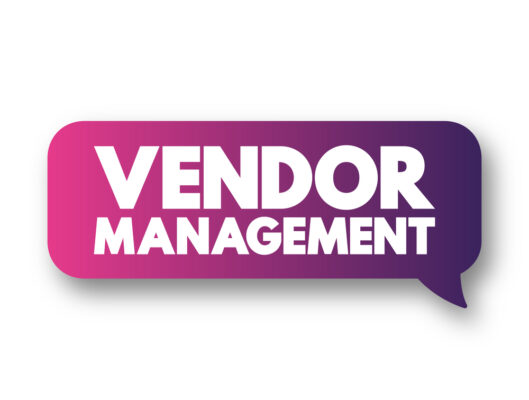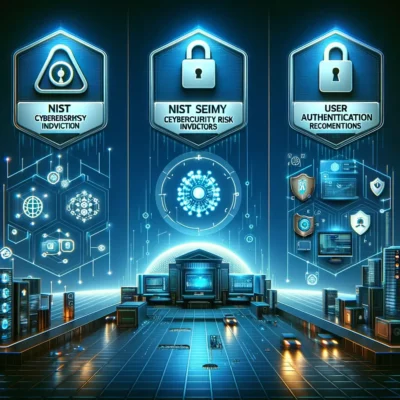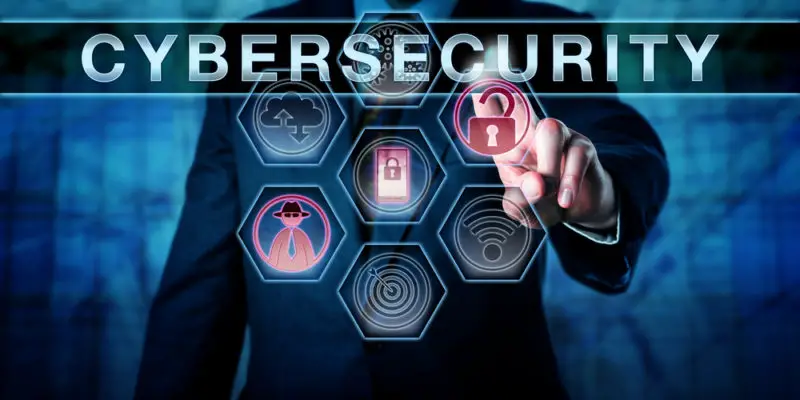NIST Cybersecurity is a framework that provides guidelines, standards, and best practices to manage and reduce cybersecurity risks.
The framework is designed to help organizations identify and prioritize their cybersecurity risks and implement effective controls to mitigate those risks. One of the key components of the NIST Cybersecurity framework is the use of Key Risk Indicators (KRIs).
Key Risk Indicators are metrics that are used to measure and monitor the effectiveness of an organization’s cybersecurity controls.
KRIs are designed to provide early warning signs of potential cybersecurity risks, allowing organizations to take proactive measures to prevent or mitigate those risks.
Using KRIs is an essential part of the NIST Cybersecurity framework, as it helps organizations identify and prioritize their most critical risks and focus their resources on the areas that need the most attention.
We will explore the concept of Key Risk Indicators in NIST Cybersecurity in more detail. We will examine how KRIs are used to measure and monitor cybersecurity risks and provide examples of some common KRIs that organizations can use to assess their cybersecurity posture.
Readers will better understand the importance of KRIs in NIST Cybersecurity and how they can improve an organization’s cybersecurity.
Understanding NIST Cybersecurity
The National Institute of Standards and Technology (NIST) is a non-regulatory agency under the United States Department of Commerce that develops standards and guidelines for various industries, including cybersecurity. NIST cybersecurity guidelines are widely used by organizations to improve their cybersecurity posture.
NIST cybersecurity guidelines are designed to help organizations manage and reduce cybersecurity risk. They provide a framework for organizations to identify, protect, detect, respond to, and recover from cybersecurity incidents.
The guidelines are based on industry best practices and are regularly updated to reflect the latest threats and technologies.
NIST cybersecurity guidelines are applicable to all organizations, regardless of size or industry. They are particularly relevant to organizations that rely on information technology (IT) to conduct their business.

Cybersecurity threats are constantly evolving, and organizations that fail to implement effective cybersecurity measures are at risk of data breaches and other cyber attacks.
NIST cybersecurity guidelines cover a wide range of topics, including risk management, access control, incident response, and security awareness training.
They provide organizations with a comprehensive cybersecurity approach, including technical and non-technical controls.
NIST cybersecurity guidelines are essential for organizations looking to improve their cybersecurity posture. Organizations can reduce their risk of cyber-attacks and protect sensitive data by following these guidelines.
Key Risk Indicators in Cybersecurity
Defining Key Risk Indicators
Key Risk Indicators (KRIs) are a set of metrics used to measure the level of risk associated with an organization’s operations or projects.
In the context of cybersecurity risk management, KRIs are used to identify potential vulnerabilities and threats that could lead to cybersecurity attacks.
KRIs are quantifiable, observable, and objective data that can be used to monitor cybersecurity controls’ effectiveness and identify areas for improvement.
KRIs can be used to measure a wide range of cybersecurity risks, including the risk of data breaches, malware infections, and other cyber threats.
Some examples of KRIs include the number of failed login attempts, the number of malware infections, and the number of vulnerabilities detected in a system.
Importance of Key Risk Indicators
KRIs are an important tool for effective cybersecurity risk management. They provide a way to measure the effectiveness of cybersecurity controls and identify improvement areas.
Organizations can detect potential vulnerabilities and threats by monitoring key risk indicators (KRIs) before cyber attacks occur.
Kris can also help organizations prioritize cybersecurity investments and allocate resources more effectively. Organizations can prioritize cybersecurity measures by identifying critical risks.
In addition, KRIs can be used to demonstrate compliance with cybersecurity regulations and standards. Many cybersecurity regulations and standards require organizations to implement effective cybersecurity controls and to measure their effectiveness using KRIs.
KRIs are a critical component of effective cybersecurity risk management. By providing a way to measure and monitor cybersecurity risks, KRIs help organizations to identify and mitigate potential vulnerabilities and threats and to allocate resources more effectively.
Role of Enterprise Risk Management
Enterprise Risk Management (ERM) is a crucial component of effective cybersecurity risk management. ERM is a process that enables organizations to identify, assess, and manage risks that could affect their objectives.
Organizations can mitigate cybersecurity risks by integrating ERM.
Enterprise Risk Management and IT
ERM programs can help organizations manage risk across their entire IT infrastructure. This includes identifying and assessing hardware, software, networks, and data risks.
Organizations can ensure comprehensive and systematic risk identification and addressing by integrating ERM into their IT risk management programs.
One way that ERM can help organizations manage IT risk is by providing a framework for assessing the effectiveness of their IT controls.
This can include controls related to access management, data protection, and incident response. Regularly assessing cybersecurity controls enables organizations to identify and strengthen areas for improvement.
Enterprise Risk Management and OT
In addition to IT, ERM can also help organizations manage risks associated with their operational technology (OT) infrastructure.
This includes risks associated with industrial control systems (ICS), supervisory control and data acquisition (SCADA) systems, and other critical infrastructure.
One of the key benefits of integrating ERM into OT risk management programs is that it enables organizations to take a holistic approach to risk management.
Organizations can develop more effective risk mitigation strategies by understanding the interdependencies between IT and OT and the associated risks.
ERM is a critical component of effective cybersecurity risk management. By integrating ERM into their cybersecurity programs, organizations can better understand the risks they face and take proactive measures to mitigate those risks.
NIST Guidance and Frameworks
NIST (National Institute of Standards and Technology) provides guidance and frameworks to help organizations manage and reduce cybersecurity risk.
The NIST guidance and frameworks are widely used in the industry and provide a comprehensive, flexible, and repeatable approach to managing cybersecurity risk.
NISTIR Series
The NISTIR (NIST Interagency/Internal Report) series provides guidance on cybersecurity-related topics. NISTIR 8286 provides a common language and a systematic methodology for managing cybersecurity risk across sectors and is widely used in the industry.
NISTIR 8286A provides a glossary of key cybersecurity terms. NISTIR 8286B provides guidance on identifying and managing cybersecurity risk for supply chain management. NISTIR 8286C provides guidance on integrating privacy and security risk management.
NIST Cybersecurity Framework
The NIST Cybersecurity Framework is a voluntary framework that provides a common language, a systematic methodology, and a set of best practices to manage cybersecurity risk.
The framework consists of three parts: the Core, the Implementation Tiers, and the Profiles. The Core provides a set of cybersecurity activities, outcomes, and informative references that are common across sectors and critical infrastructure.
The Implementation Tiers provide a way to gauge the level of cybersecurity risk management. The Profiles provide a way to align cybersecurity activities with business requirements, risk tolerances, and resources.
The NIST Cybersecurity Framework is widely used in the industry and has been adopted by many organizations, including the federal government.
The framework is flexible and can be tailored to meet an organization’s specific needs. The framework is also compatible with other frameworks and standards, such as ISO 27001, COBIT, and ITIL.
NIST also provides guidance and frameworks for specific areas of cybersecurity, such as risk management, supply chain risk management, and privacy risk management.
The guidance and frameworks are developed by NIST’s Information Technology Laboratory (ITL) and are widely used in the industry.

NIST guidance and frameworks provide a comprehensive, flexible, and repeatable approach to managing cybersecurity risk. The NISTIR series provides guidance on various topics related to cybersecurity, while the NIST Cybersecurity Framework provides a common language, a systematic methodology, and a set of best practices to manage cybersecurity risk.
The guidance and frameworks are widely used in the industry and have been adopted by many organizations, including the federal government.
Cybersecurity Risk Registers
Cybersecurity risk registers are essential to enterprise risk management, providing a centralized repository for tracking and managing risks.
The National Institute of Standards and Technology (NIST) defines a risk register as “a tool used to document identified risks, their severity, likelihood, and associated information.”
Understanding Risk Registers
Risk registers are used to identify, assess, and manage risks across the enterprise. They provide a comprehensive view of the organization’s risk posture, helping to prioritize risk response efforts and allocate resources accordingly. Risk registers are typically organized into categories, such as financial, operational, strategic, and cybersecurity risks.
Cybersecurity risk registers are specific to the identification and management of cybersecurity risks. They provide a framework for identifying and assessing cybersecurity risks, including threats, vulnerabilities, and potential impacts.
Cybersecurity risk registers also help to prioritize cybersecurity risks based on their potential impact on the organization.
Implementing Risk Registers
Implementing a risk register requires a structured approach. The process typically involves the following steps:
- Identify and document risks: The first step is to identify and document risks. This involves gathering information from various sources, including risk assessments, security audits, and incident reports.
- Assess risks: Once risks have been identified, they must be assessed to determine their severity, likelihood, and potential impact. This involves analyzing the risk’s likelihood and potential impact on the organization.
- Develop risk response strategies: Risk response strategies should be developed based on the severity and potential impact of identified risks. This involves determining the appropriate risk response strategy, such as risk avoidance, mitigation, transfer, or acceptance.
- Monitor and update the risk register: Once it has been developed, it should be regularly monitored and updated to reflect changes in the organization’s risk posture. This includes updating risk assessments, identifying new risks, and assessing the effectiveness of risk response strategies.
Cybersecurity risk registers are essential to enterprise risk management. They provide a centralized repository for tracking and managing risks, helping to prioritize risk response efforts and allocate resources accordingly.
Implementing a risk register requires a structured approach, including identifying and documenting risks, assessing risks, developing risk response strategies, and monitoring and updating the risk register.
Public Comment and Changes
Public Comment Period
NIST’s Risk Management Framework (RMF) is a widely used cybersecurity framework. NIST opens a public comment period to allow stakeholders to provide feedback on draft publications.
Many of NIST’s cybersecurity and privacy publications are posted as drafts for public comment. Comment periods are still open for the following publications:
- Draft SP 800-108 Revision 1
- Draft controls for SP 800-53 Patch Release 5.1.1
These drafts are available for public comment until November 2023. NIST encourages stakeholders to provide feedback on the drafts to improve the quality and effectiveness of the publications.
Recent Changes
NIST has recently made some changes to its cybersecurity framework. In August 2023, NIST released a major update to its widely used Cybersecurity Framework.
The update includes new guidelines for detecting, responding to, and recovering from cybersecurity risks across the organization. NIST accepts public comment on the draft framework until November 4, 2023. NIST does not plan to release another draft.
A workshop planned for the fall will be announced shortly and will serve as another opportunity for the public to provide feedback and comments on the draft.
In addition, NIST is adjudicating comments and plans to issue SP 800-53 Release 5.1.1 in November 2023. NIST opens a 2-week expedited public comment period on draft controls for October 17-31, 2023, and plans to issue SP 800-53 Patch Release 5.1.1 in November 2023.
These changes reflect NIST’s commitment to updating its cybersecurity framework to address emerging threats and provide guidance to organizations on how to protect their systems and data.
Cybersecurity in Supply Chain
Cybersecurity in the supply chain has become a critical concern for organizations of all sizes. The supply chain is a complex ecosystem of interconnected entities, including suppliers, vendors, manufacturers, distributors, and customers.
Each entity in the supply chain is a potential entry point for cyber attackers to exploit vulnerabilities and gain unauthorized access to sensitive data and systems.
Understanding Supply Chain Risks
The supply chain is vulnerable to a range of risks, including cyber risks, natural disasters, geopolitical risks, and financial risks.
Cyber risks are particularly challenging as they are constantly evolving, and attackers are becoming more sophisticated in their methods.
Organizations must clearly understand the supply chain risks and their potential impact on the business. They must assess the risks at each stage of the supply chain and identify the critical assets, systems, and data that need protection.
Cybersecurity Supply Chain Risk Management
To manage the cybersecurity risks in the supply chain, organizations can adopt the Cybersecurity Supply Chain Risk Management (C-SCRM) framework developed by the National Institute of Standards and Technology (NIST).
The C-SCRM framework provides a set of practices that organizations can use to manage the growing cybersecurity risks associated with their supply chains.
The C-SCRM framework includes five phases: (1) Identify, (2) Assess, (3) Mitigate, (4) Respond, and (5) Recover. Each phase includes a set of activities that organizations can use to manage the cybersecurity risks in their supply chains.
These activities include identifying the critical assets, systems, and data in the supply chain, assessing the risks, implementing mitigation strategies, developing response plans, and testing the plans.
Organizations can also establish a CSRM program to manage the cybersecurity risks in their supply chains. The CSRM program includes policies, procedures, and guidelines that provide a framework for managing the cybersecurity risks in the supply chain.
The CSRM program can help organizations establish a cybersecurity culture and ensure that all supply chain entities know their roles and responsibilities in managing cybersecurity risks.
Impacts and Future Directions
Impacts on Privacy
The implementation of Key Risk Indicators (KRIs) will have a significant impact on privacy. As organizations collect and analyze data to identify potential risks, they must also ensure that the privacy of individuals is protected.
This is particularly important in light of recent privacy breaches that have significantly harmed individuals and organizations.
Organizations can mitigate privacy risks by implementing KRIs.
Impacts on Financial Sector
The financial sector is particularly vulnerable to cyber attacks, and implementing KRIs can help mitigate this risk.
KRIs can identify potential threats to financial systems and track the effectiveness of risk management strategies. By monitoring KRIs, financial institutions can quickly identify potential threats and take steps to mitigate them, reducing the risk of financial loss.
Future of Cybersecurity Risk Management
The future of cybersecurity risk management is likely to be heavily influenced by the implementation of KRIs. As organizations become more sophisticated in their use of data analytics, KRIs will become an increasingly important tool for managing cybersecurity risks.
In addition, the use of patent claims and software to identify potential risks will become more widespread. Senior leaders must be knowledgeable about these developments and prepared to invest in the necessary resources to stay ahead of the curve.

The implementation of KRIs will have a significant impact on cybersecurity risk measurement.
Organizations can better protect themselves from cyber-attacks by using data analytics to identify potential risks and track the effectiveness of risk management strategies.
However, it is important to recognize that KRIs are just one tool in the cybersecurity toolbox and should be used in conjunction with other strategies to provide a comprehensive approach to cybersecurity risk management.

Chris Ekai is a Risk Management expert with over 10 years of experience in the field. He has a Master’s(MSc) degree in Risk Management from University of Portsmouth and is a CPA and Finance professional. He currently works as a Content Manager at Risk Publishing, writing about Enterprise Risk Management, Business Continuity Management and Project Management.

